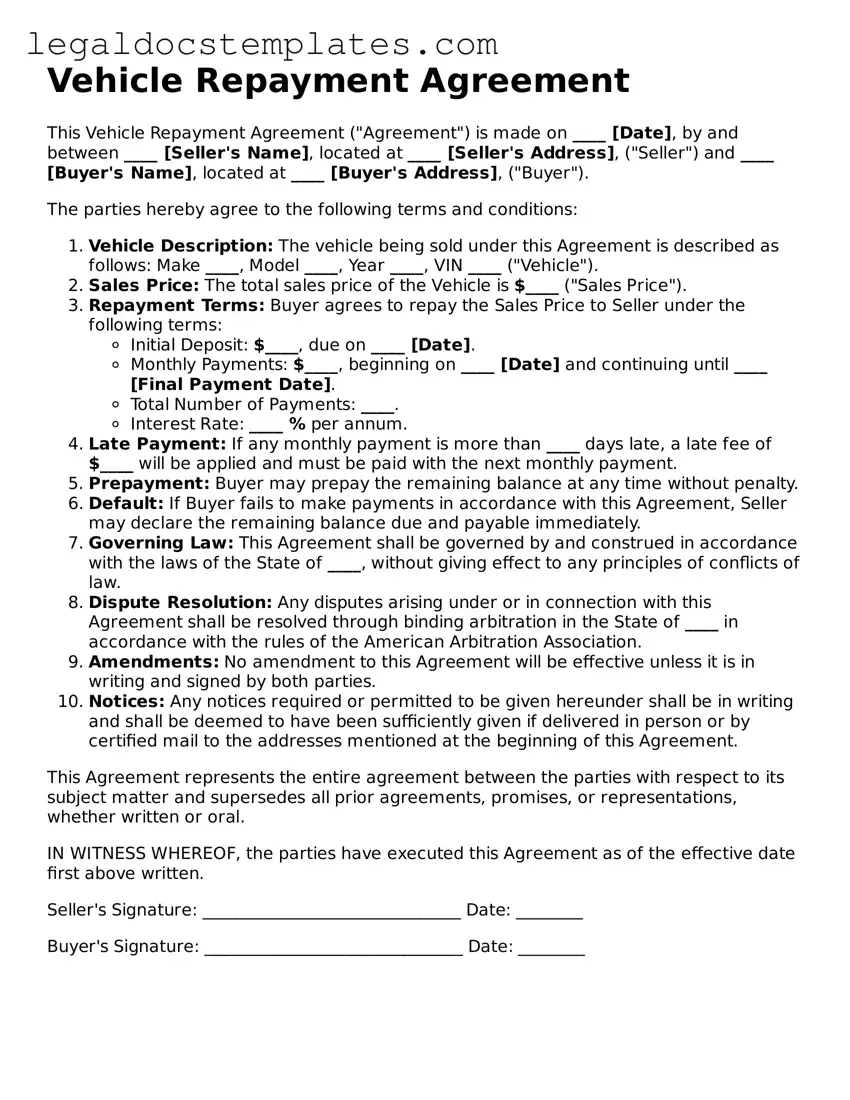The Personal Loan Agreement form resembles the Vehicle Repayment Agreement in terms of structure and purpose. Both documents are designed to lay down the terms under which money is lent by one party to another, specifying repayment schedules, interest rates, and consequences of default. However, the Personal Loan Agreement is broader in scope, potentially covering a wide range of personal loans beyond vehicle financing. This includes loans for education, healthcare, or other personal expenditures, making it versatile yet fundamentally similar in securing a lender's investment.
Lease Agreements share common ground with Vehicle Repayment Agreements, primarily in the establishment of a fixed-term arrangement between two parties. In a Lease Agreement, one party agrees to rent property (real estate, equipment, vehicles) to another party for a specified period, often detailing payment intervals, maintenance responsibilities, and termination clauses. Like Vehicle Repayment Agreements, these documents protect both parties' interests but focus on the temporary use of an asset rather than financing its purchase.
The Installment Sale Agreement has a direct correlation with the Vehicle Repayment Agreement, as both facilitate the purchase of an item through scheduled payments. These agreements lay out the total purchase price, down payment, interest rates, payment schedule, and the repercussions of failing to keep up with payments. The key difference lies in the Installment Sale Agreement’s broader applicability to various items, such as real estate or business assets, while maintaining a similar legal framework to ensure payment completion over time.
The Promissory Note echoes elements of the Vehicle Repayment Agreement by recording a debt and promising repayment under specific terms. This document is simpler, focusing on the essentials of the amount borrowed, interest rate, repayment schedule, and the borrower's signature. While it can be used for a variety of loans, including vehicle loans, it lacks the detailed terms regarding the specific nature of the loan's use and collateral, which might be included in a more detailed Vehicle Repayment Agreement. Nevertheless, its fundamental principle of documenting a commitment to repay a debt aligns closely with the intentions behind the Vehicle Repayment Agreement.
Credit Card Agreements also parallel the Vehicle Repayment Agreement in the structure of debt repayment. These agreements outline the terms under which credit is extended to the purchaser, encompassing interest rates, minimum payment requirements, and fees for late payments, much like the Vehicle Repayment Agreement outlines repayment for a vehicle. However, Credit Card Agreements are inherently revolving, allowing for continuous borrowing within a credit limit, contrasting the closed-end nature of a vehicle repayment, which is for a fixed amount and period until the debt is fully repaid.
